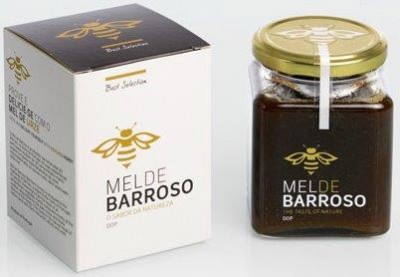Description: The Mel de Barroso PDO is honey from the black bee of the Apis mellifera Iberica species. The nectar comes from the naturally occurring wild flowers in the area where it is made, which consists mostly of heather. Because this honey is a completely natural product and has undergone no industrial processes it tends to crystallise very easily, especially in cold temperatures.
Production method: The hives cannot be less than 1.000 m from eucalyptus woods. The honey is extracted from July to September by means of compressed air or the traditional combing method. Extraction and filtering can only be carried out in the same area as the honey is produced at a temperature of no greater than 45°C.
Special features: Mel de Barroso PDO is dark in colour and has a flavour and aroma reflecting the regional flora, where heather predominates.
Production area: Mel de Barroso PDO is made in the municipal areas of Boticas, Chaves, Montalegre e Vila Pouca de Aguiar and parishes of Jou and Valongo de Milhais, at the municipality of Murça, in the district of Vila Real.
History: Written and oral references to the production of Mel de Barroso PDO honey date far back into the past. References to bee keeping are to be heard in the local proverbs and can also be seen in family insignias and even in the local surnames and place names.
Product specifications (pdf)
Producer group
CAPOLIB - Cooperativa Agrícola de Boticas C. R. L.
Control and certification body
CERTIS - Controlo e Certificação, Lda.
Delegação de Competências
Control plan
Control plan (pdf)
Publication in EU official journal
Regulamento (CE) N.º 704/2005 da Comissão de 04.05.2005 – L 148/1
Regulamento (CE) N.º 1107/96 da Comissão de 12.06.1996 – L 148/1
JOUE C419/23 12.12.2019
Publication in the Portuguese official journal
Aviso (extrato) n.º 2146/2023 de 31.01.2023
Aviso n.º 11128/2011 de 12.05.2011
Despacho n.º 18910/2002 de 26.08.2002
Despacho n.º 16162/2001 de 03.08.2001
Aviso n.º 16671/2000 de 28.11.2000
Despacho n.º 23/1994 de 04.02.1994



